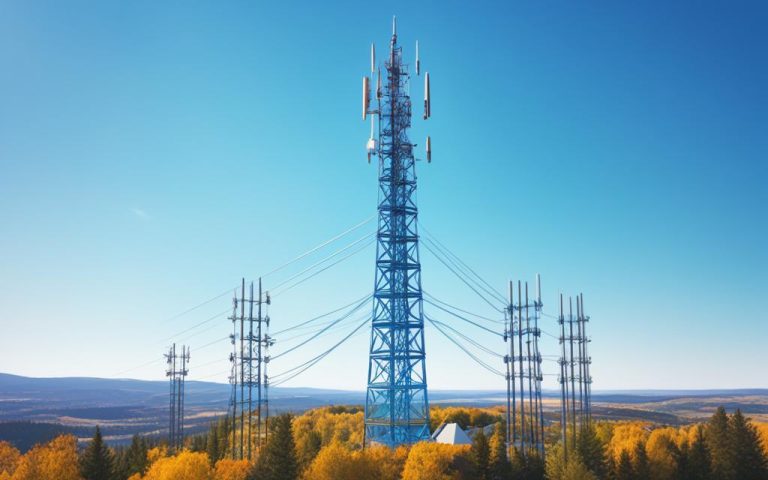With the rapid advancement of technology, fixed wireless access (FWA) has emerged as a strategic solution for delivering broadband internet services. In areas where traditional wired connections are challenging or costly to deploy, fixed wireless networks provide a viable alternative. This article explores the key considerations for strategically planning the deployment of fixed wireless networks, including infrastructure investment, spectrum allocation, target market identification, service offerings, technology partnerships, regulatory compliance, and marketing and customer education.
The success of a fixed wireless network relies heavily on strategic planning. Effective infrastructure investment ensures the robustness and scalability of the network, allowing for seamless connectivity and high-speed internet access. Allocating spectrum resources strategically ensures optimal network performance and coverage. Identifying the right target markets is crucial to maximize the network’s reach and impact.
When deploying a fixed wireless network, it is essential to develop attractive service offerings that meet the needs of the target market. This involves understanding customer preferences and tailoring the services accordingly. Collaborating with technology partners can provide access to cutting-edge solutions and expertise, enhancing the network’s capabilities.
Furthermore, navigating regulatory compliance is essential to ensure adherence to industry standards and regulations. Marketing and customer education play a vital role in creating awareness and driving adoption of fixed wireless services. By effectively conveying the benefits and value proposition, potential customers can make informed decisions and embrace the connectivity opportunities offered by fixed wireless networks.
Strategic planning is the foundation for successful fixed wireless network deployment. By considering infrastructure investment, spectrum allocation, target market identification, service offerings, technology partnerships, regulatory compliance, and marketing and customer education, network operators can build robust networks that bridge the digital divide and provide reliable broadband internet access to communities nationwide.
Understanding 5G FWA
5G FWA, or 5G Fixed Wireless Access, leverages the high-speed and low-latency capabilities of 5G networks to deliver broadband internet services directly to homes and businesses without relying on traditional wired connections. This revolutionary wireless means of connectivity presents a rapid deployment solution, particularly in rural or underserved areas where extensive physical infrastructure may be challenging or costly to implement.
By harnessing the power of 5G technology, FWA eliminates the need for extensive cabling and enables internet access to be delivered through wireless signals. This not only provides a cost-effective alternative to traditional wired broadband but also significantly speeds up the deployment process. The ability to bypass physical infrastructure allows service providers to quickly connect customers without the lengthy and expensive installation processes associated with wired connections.
5G FWA offers a multitude of benefits, ranging from its high-speed capabilities to its ability to deliver reliable and scalable broadband services. Its inherent flexibility enables service providers to target areas where the demand for internet connectivity is underserved or difficult to reach. Additionally, the cost-effectiveness of wireless deployment allows for rapid expansion and network coverage, making it an ideal solution for bridging the digital divide.
As the demand for high-speed internet continues to grow, 5G FWA presents a viable alternative that combines the advantages of 5G technology with the convenience of wireless means. With its rapid deployment capabilities and ability to provide broadband services without the need for extensive physical infrastructure, 5G FWA is poised to revolutionize connectivity and bridge the digital gap for communities around the world.
Strategic Considerations for 5G FWA Deployment
When planning for the deployment of 5G FWA, several strategic considerations come into play. These factors are crucial in ensuring a successful implementation that delivers optimal results. Let’s explore some of these key considerations:
1. Infrastructure Investment
Investing in a robust 5G network infrastructure forms the backbone of a reliable and high-performance fixed wireless access solution. It is essential to allocate sufficient resources and funds towards building and maintaining the infrastructure necessary to support 5G FWA deployment.
2. Spectrum Allocation
Spectrum allocation plays a critical role in the success of 5G FWA. Efficiently managing and allocating spectrum resources is essential to ensure optimal network performance and availability. By leveraging the right spectrum bands for 5G deployment, operators can deliver high-speed connectivity to their target markets.
3. Target Market Identification
Identifying the right markets for 5G FWA deployment is a crucial step. Conducting comprehensive research and analysis to understand the demand for broadband services in specific areas helps operators focus their efforts on areas where there is a genuine need for improved connectivity.
4. Service Offerings
Developing attractive service offerings is essential to acquire and retain customers in the competitive broadband market. By understanding the unique requirements of the target market, operators can tailor their service packages to meet the demands of different customer segments, enhancing their value proposition.
5. Technology Partnerships
Forming strategic technology partnerships can significantly contribute to the success of 5G FWA deployment. Collaborating with equipment manufacturers, infrastructure providers, and other industry players can create synergies, leverage expertise, and accelerate the deployment process.
6. Regulatory Compliance
Understanding and navigating the regulatory landscape is crucial in ensuring compliance with relevant policies and regulations governing the deployment of 5G FWA. Operators must stay abreast of licensing requirements, spectrum usage rights, and other regulatory obligations to operate within legal boundaries.
7. Effective Marketing Strategies
Implementing robust marketing strategies is essential to create awareness and drive adoption of 5G FWA services. By effectively communicating the benefits and advantages of 5G FWA to target customers, operators can generate interest and encourage uptake.
By considering these strategic factors during the planning and deployment phases, operators can position themselves for success in the 5G FWA market, delivering reliable, high-speed connectivity to their customers.
Challenges and Opportunities
While 5G Fixed Wireless Access (FWA) presents numerous opportunities, it also faces challenges that need to be addressed for its successful implementation. These challenges include:
- Spectrum Availability: One of the primary challenges is the availability of suitable spectrum. As the demand for wireless connectivity continues to grow, the spectrum resources become increasingly limited. Ensuring sufficient spectrum allocation is crucial to support the deployment and performance of 5G FWA networks.
- Technological Limitations: Despite the advancements in 5G technology, there are still technological limitations in certain areas. These limitations can be related to coverage, capacity, or the type of infrastructure available. Overcoming these limitations requires strategic planning and investment in infrastructure development.
- Competition from Broadband Providers: Existing broadband providers offer competition to 5G FWA services. These providers have established infrastructures and customer bases, making it challenging for 5G FWA to penetrate the market. To overcome this competition, it is crucial to differentiate the offerings and highlight the unique advantages of 5G FWA.
Despite these challenges, 5G FWA presents immense opportunities for bridging the digital divide, enabling smart cities, and driving economic growth. Strategic planning, investment, and collaboration will play a pivotal role in overcoming the challenges and capitalizing on the opportunities.

Conclusion
The successful implementation of 5G fixed wireless access (FWA) requires a comprehensive strategy that encompasses infrastructure development, market analysis, regulatory compliance, and customer engagement. By adopting a proactive approach, service providers can effectively address the connectivity needs of underserved areas while maximizing their return on investment.
Initially focusing on underserved regions enables thorough comprehension of the target market’s requirements and optimizes resource allocation. As the network expands, 5G FWA can gradually reach more densely populated urban areas, providing reliable broadband services to a broader range of communities.
5G FWA is positioned as the future of broadband services, revolutionizing connectivity and creating new opportunities for businesses and consumers alike. Combining high-speed data transmission, low latency, and flexibility, 5G FWA enhances the user experience, enabling seamless video streaming, online gaming, remote work capabilities, and IoT applications.
By implementing a comprehensive strategy that considers infrastructure development, market analysis, regulatory compliance, and customer engagement, stakeholders can harness the full potential of 5G FWA to bridge the digital divide, enable smart cities, and drive economic growth. With its rapid deployment capabilities, cost-effectiveness, and ability to reach underserved areas, 5G FWA is poised to reshape the broadband landscape and empower individuals and businesses with enhanced connectivity.
FAQ
What is fixed wireless network deployment?
Fixed wireless network deployment refers to the process of implementing a network infrastructure that provides broadband internet services through wireless means, bypassing the need for traditional wired connections.
What is 5G FWA?
5G FWA (fixed wireless access) utilizes the high-speed and low-latency capabilities of 5G networks to deliver broadband internet services directly to homes and businesses wirelessly.
What are the strategic considerations for 5G FWA deployment?
Strategic considerations for 5G FWA deployment include investing in robust infrastructure, managing spectrum resources efficiently, identifying target markets, and developing attractive service offerings.
What challenges does 5G FWA face?
Challenges 5G FWA faces include spectrum availability, technological limitations in certain areas, and competition from existing broadband providers.
How can 5G FWA address connectivity needs?
By focusing on underserved areas and gradually expanding the network to urban areas, 5G FWA can address the connectivity needs of communities while providing a good return on investment.
What opportunities does 5G FWA offer?
5G FWA presents opportunities to bridge the digital divide, enable smart cities, and drive economic growth through improved connectivity.



















